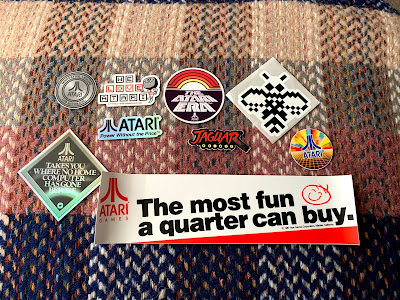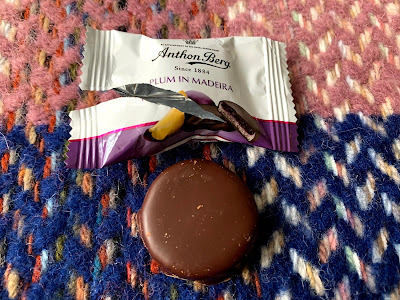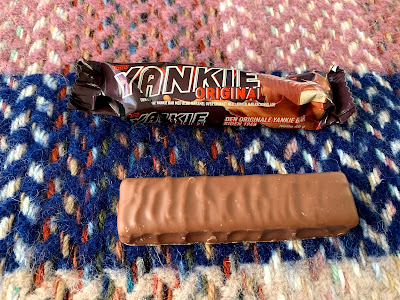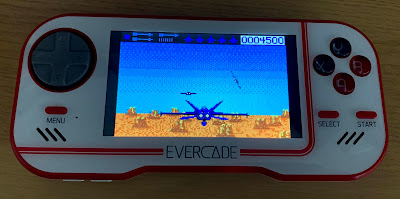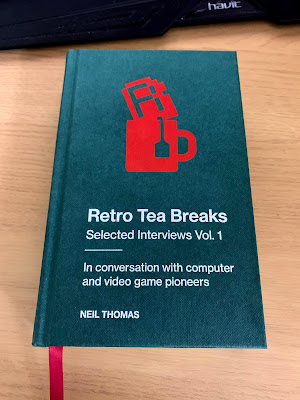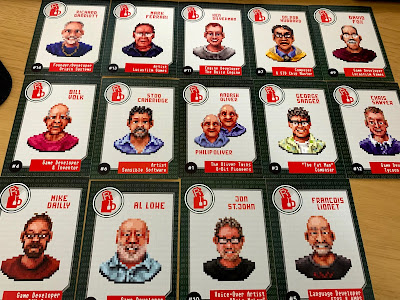Rather more promptly than expected, the latest SnackSurprise box landed just before Christmas. Due to having rather more traditional fare to consume over the festive period, my good lady and I decided to wait until after the Christmas to sample the delights held within this blue and orange box of delights.
 |
| Another good selection of snacks. |
As you can see, another decent selection that covers savoury and sweet snacks, as well as the ever present drinks can. Here are the relevant pages from the pamphlet.
 |
| The usual pamphlet. |
So, in fitting with our usual pattern, we decided on the savoury snacks first.
 |
| Meaty Quavers... mmmm. |
Boca Bits are crispy salted wheat snacks with a rather delicate meat flavour. As you can see, they look very much like Quavers and, taking away the slightly different texture due to their wheat origin, that's precisely what they are. Very pleasant and with a good crunch, their flavour doesn't sit too long on the palette. A very good start to the box.
 |
| I didn't mean to make it look like he has a cheesy goatee... |
Pandilla (by Cheetos) are another bag of crisps, this time in the shape of ghosts. These are very crunchy and have an almost mature cheese flavour, certainly in the aftertaste, which lingers a good while. Definitely one for lovers of cheese flavoured crisps, though if you're on the fence about that flavour, maybe these aren't the ones for you.
 |
| They at least look nice... |
The first of the sweet snacks now and we have Palmeras. Described as a crunchy puff pastry topped with a sugar glaze, these were the first disappointment in the box. The are certainly soft, almost falling to pieces when we tried to remove them from the packet. They are also crunchy, what with that glaze too, but they also have a greasy texture - you get the buttery feel of the puff pastry, but that is so strong, it becomes greasy. That sugar glaze doesn't go well with the grease either. Neither of us were enamoured with these though to it's credit, I can understand why they might go well with coffee.
 |
| These are fun sweets, and tasty too. |
Fini Galaxy Mix are a strawberry flavoured mix of very chewy gummy sweets. The initial impression is of intense sourness that soon gives way to a punchy strawberry flavour, a combination that is really quite refreshing. We couldn't manage more than one before giving up, as they really do pucker the cheeks, but they do what they set out to do.
 |
| Lovely sour balls of gummy juice... |
Pikotas next, and these feel very much like Jawbreakers until you actually try one and crack that firm but thin outer shell where you then get a lovely gummy centre. The cherry flavour is quite strong with just a hint of sourness that is far less over-powering than the Galaxy Mix. Very good little sweets.
 |
| Simple and straight forward. |
Fini Sparks are tiny, multi-flavoured candy pieces that have a nice, punchy taste, but one that doesn't last too long. This is a good thing, as they are a tad sour (there is a pattern here), but for what they offer, another good sweet.
 |
| What are these? Only Smarties have the answer... |
Lacasitos = Smarties. 'Nuff said.
 |
| Cakey goodness or pink coated turd... You decide... |
Pantera Rosa is a cake bar that encases a soft sponge and cream filling in a pink coloured shell. The outer covering is a sweet as it is pink, but get past that and you have a deliciously moist sponge, with the cream centre adding that extra layer of texture to complete a very nice snack. This is definitely one for elevenses with either tea or coffee.
 |
| Baggsie the double one! |
The Filipinos biscuits were another delight - small round chocolate covered treats with a good snap and plenty of crunch. The balance between the biscuit and chocolate is just right and these are snacks highly recommended to accompany your mid-morning brew of choice.
 |
| That texture adds to the pleasure... of the taste, obviously! |
Tokke is the penultimate snack and can best be described as a Time Out with extra rice pieces included. These add even more texture to the mild milk chocolate shell and crunchy wafer inside. An intriguing combination and one that felt right, but also a tad off. Still, definitely a nice choccy bar.
 |
| A glass of something quite unremarkable. |
Finally, we have La Casera, a fizzy drink that is said to be one of the most popular soft drinks in Spain and a great addition to wine or beer. What you actually get is carbonated water with a tiny (and I mean tiny) hint of lemon. It's not an offensive taste, so does better than some drinks we have from previous snack boxes, but that is its problem - there is hardly any taste there. So whilst you could say it's refreshing, it achieves this by tasting of neither nowt nor summat. Having said that, we can certainly see how this drink would turn a glass of wine into a spritzer or a beer into a shandy, if such things float your boat.
So we once again come to the end of another Snack Surprise box and, for the second month running, a box that has exceeded expectations. With only a couple of items that didn't suit us, this was another good selection. Let us see what the new year brings for the January box.We are certainly looking forward to it.




